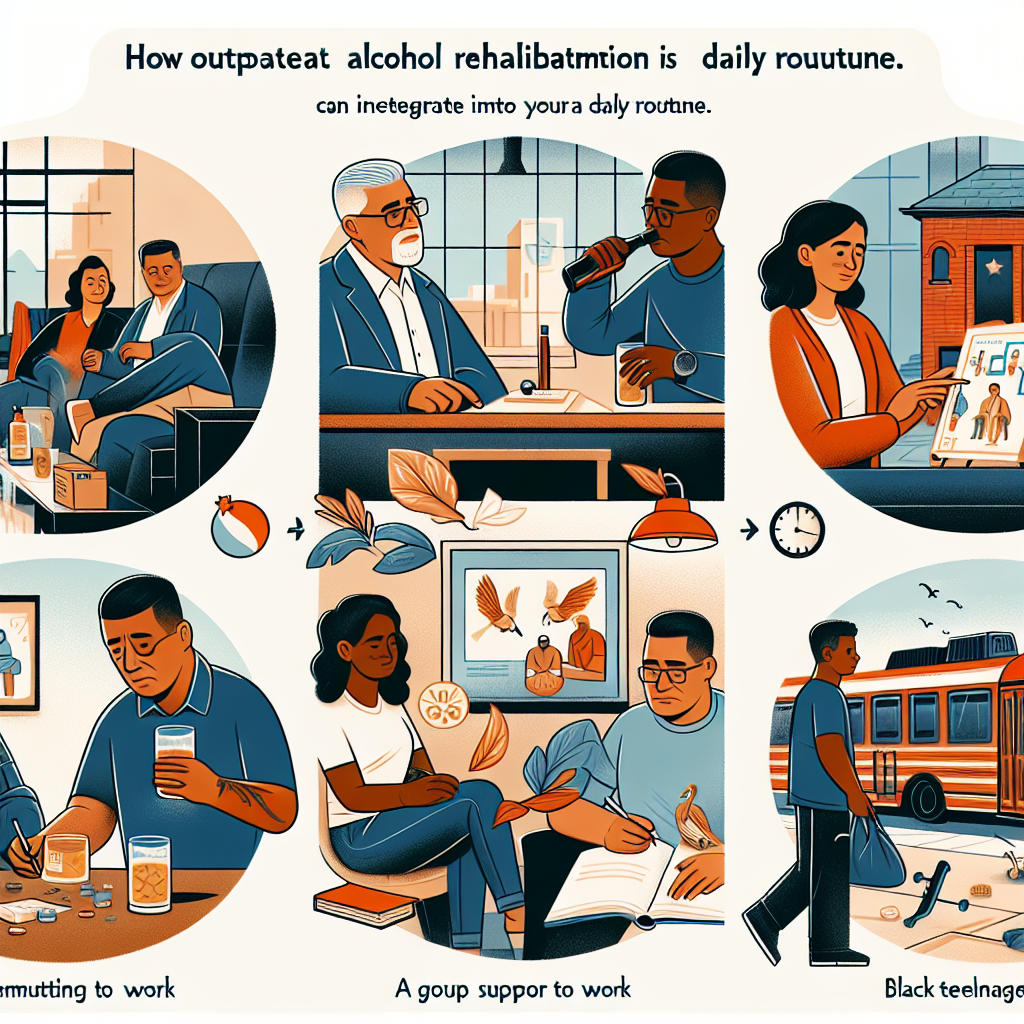-
Table of Contents
“Choosing the Right Path: Understanding Inpatient vs. Outpatient Cocaine Rehab”
Introduction
Inpatient and outpatient cocaine rehab programs offer distinct approaches to addiction treatment, each tailored to meet the varying needs of individuals seeking recovery. Inpatient rehab, also known as residential treatment, involves patients living at a treatment facility for a specified period, providing a structured and immersive environment with 24/7 medical and emotional support. This setting is ideal for those with severe addiction, co-occurring mental health disorders, or unstable living conditions. Conversely, outpatient rehab allows individuals to live at home while attending scheduled treatment sessions, offering greater flexibility and enabling them to maintain work, school, or family responsibilities. Outpatient programs vary in intensity, from partial hospitalization programs (PHPs) to standard outpatient services, and are suitable for those with milder addiction or as a step-down from inpatient care. Understanding the differences between these two types of rehab is crucial for selecting the most appropriate treatment path for sustained recovery.
Key Differences in Treatment Approaches Between Inpatient and Outpatient Cocaine Rehab
When it comes to overcoming cocaine addiction, choosing the right treatment approach is crucial for long-term recovery. Inpatient and outpatient rehab programs offer distinct pathways, each with unique benefits and challenges. Understanding these key differences can help individuals and their loved ones make informed decisions about the best course of action.
Inpatient rehab, also known as residential treatment, involves staying at a facility for an extended period, typically ranging from 30 to 90 days. This immersive environment provides a structured and supportive setting, which can be particularly beneficial for those with severe addictions or co-occurring mental health disorders. One of the primary advantages of inpatient rehab is the ability to remove individuals from environments that may trigger their substance use. By residing in a controlled setting, patients can focus entirely on their recovery without the distractions and temptations of daily life.
In contrast, outpatient rehab allows individuals to live at home while attending treatment sessions at a facility. This flexibility can be advantageous for those who have work, school, or family commitments that they cannot abandon. Outpatient programs vary in intensity, with some requiring daily attendance and others meeting a few times a week. This approach can be effective for individuals with milder addictions or those who have already completed an inpatient program and are transitioning back to everyday life.
One of the key differences between inpatient and outpatient rehab lies in the level of medical supervision and support. Inpatient facilities typically offer 24/7 medical care, which can be crucial for managing withdrawal symptoms and addressing any medical complications that arise during detoxification. This constant supervision ensures that patients receive immediate assistance if they experience any physical or psychological distress. On the other hand, outpatient programs may provide limited medical support, often relying on scheduled appointments and check-ins to monitor progress.
Another significant distinction is the intensity and variety of therapeutic interventions available. Inpatient rehab programs often include a comprehensive range of therapies, such as individual counseling, group therapy, cognitive-behavioral therapy (CBT), and holistic treatments like yoga and meditation. This diverse array of therapeutic options can address the multifaceted nature of addiction, helping individuals develop coping strategies, improve mental health, and build a strong foundation for recovery. Outpatient programs, while still offering valuable therapeutic interventions, may have fewer resources and less intensive schedules, which can impact the depth of treatment.
The sense of community and peer support is another critical factor that differentiates inpatient from outpatient rehab. In a residential setting, individuals have the opportunity to build strong connections with others who are going through similar experiences. This camaraderie can be incredibly motivating and provide a sense of belonging that is essential for recovery. Outpatient programs, while still fostering a supportive environment, may not offer the same level of peer interaction due to the limited time spent at the facility.
Ultimately, the choice between inpatient and outpatient rehab depends on various factors, including the severity of the addiction, the presence of co-occurring disorders, and personal circumstances. Both approaches have their merits, and the most effective treatment plan may involve a combination of both. For instance, an individual might start with inpatient rehab to stabilize their condition and then transition to outpatient care for continued support.
In conclusion, understanding the key differences between inpatient and outpatient cocaine rehab can empower individuals to make informed decisions about their treatment journey. By considering factors such as medical supervision, therapeutic intensity, and peer support, individuals can choose the path that best aligns with their needs and circumstances. With the right approach, recovery is not only possible but achievable, paving the way for a healthier, more fulfilling life.
Comparing Success Rates: Inpatient vs. Outpatient Cocaine Rehabilitation Programs
When considering the journey to recovery from cocaine addiction, one of the most critical decisions involves choosing between inpatient and outpatient rehabilitation programs. Both approaches offer unique benefits and challenges, and understanding their differences can significantly impact the success rates of individuals seeking to overcome their addiction. By examining the success rates of inpatient versus outpatient cocaine rehabilitation programs, we can gain valuable insights into which option might be more effective for different individuals.
Inpatient rehabilitation programs, also known as residential treatment, require patients to live at the treatment facility for a specified period, typically ranging from 30 to 90 days. This immersive environment provides a structured and supportive setting, which can be particularly beneficial for individuals with severe addiction or those who have struggled with relapse in the past. The success rates for inpatient programs are often higher due to the comprehensive nature of the treatment. Patients receive round-the-clock care, access to medical professionals, and a variety of therapeutic interventions, including individual and group therapy, cognitive-behavioral therapy, and holistic treatments such as yoga and meditation. This constant support and supervision can help individuals develop coping mechanisms, build resilience, and address the underlying issues contributing to their addiction.
On the other hand, outpatient rehabilitation programs offer a more flexible approach, allowing individuals to continue living at home while attending treatment sessions during the day or evening. This option can be particularly appealing for those who have work, school, or family commitments that they cannot put on hold. Outpatient programs vary in intensity, with some requiring daily attendance and others meeting a few times a week. While the success rates for outpatient programs can be lower compared to inpatient programs, they still provide valuable support and resources for individuals motivated to recover. Outpatient treatment often includes similar therapeutic interventions as inpatient programs, such as counseling, support groups, and educational workshops. However, the level of supervision and structure is less intensive, which can be a drawback for those who need a more controlled environment to avoid triggers and temptations.
Transitioning from one type of program to another can also play a crucial role in the success rates of cocaine rehabilitation. For instance, some individuals may start with an inpatient program to stabilize their condition and then transition to an outpatient program for continued support as they reintegrate into their daily lives. This step-down approach can provide a balance of intensive treatment and gradual independence, helping individuals maintain their sobriety in the long term.
It is essential to recognize that success rates can vary widely depending on several factors, including the severity of the addiction, the individual’s commitment to recovery, and the presence of a strong support system. Personalized treatment plans that address the specific needs and circumstances of each individual are more likely to yield positive outcomes. Additionally, ongoing aftercare and support, such as participation in 12-step programs or continued therapy, can significantly enhance the chances of sustained recovery.
Ultimately, the choice between inpatient and outpatient cocaine rehabilitation programs should be based on a thorough assessment of the individual’s needs, preferences, and life circumstances. Both options have their merits, and the most effective approach often involves a combination of treatments tailored to the individual’s unique situation. By understanding the differences in success rates and the factors that contribute to them, individuals and their loved ones can make informed decisions that pave the way for a successful and lasting recovery journey.
Q&A
1. **Question:** What is the primary difference in the living arrangements between inpatient and outpatient cocaine rehab?
**Answer:** Inpatient cocaine rehab requires patients to live at the treatment facility for the duration of the program, while outpatient cocaine rehab allows patients to live at home and attend treatment sessions at scheduled times.
2. **Question:** How do the levels of medical supervision differ between inpatient and outpatient cocaine rehab?
**Answer:** Inpatient cocaine rehab provides 24/7 medical supervision and support, whereas outpatient cocaine rehab offers less intensive supervision, with patients typically receiving care during scheduled visits.
Conclusion
In conclusion, inpatient and outpatient cocaine rehab programs differ primarily in their structure, intensity, and environment. Inpatient rehab provides a highly structured, immersive environment with 24/7 medical and emotional support, making it suitable for individuals with severe addiction or co-occurring disorders. Outpatient rehab offers more flexibility, allowing individuals to maintain daily responsibilities while attending scheduled treatment sessions, making it ideal for those with milder addiction or strong external support systems. Both approaches aim to achieve long-term recovery but cater to different needs and circumstances of individuals seeking treatment.



